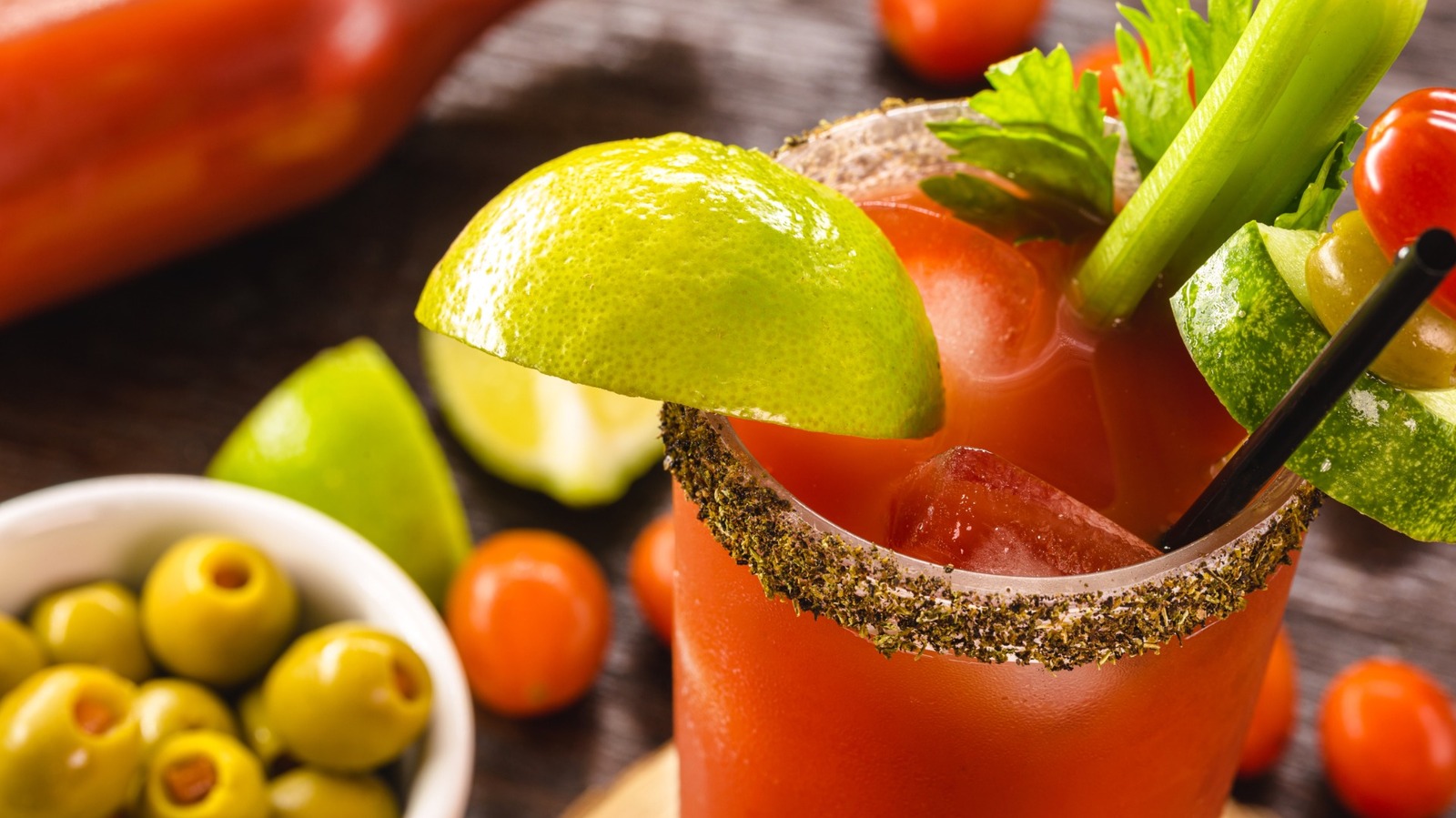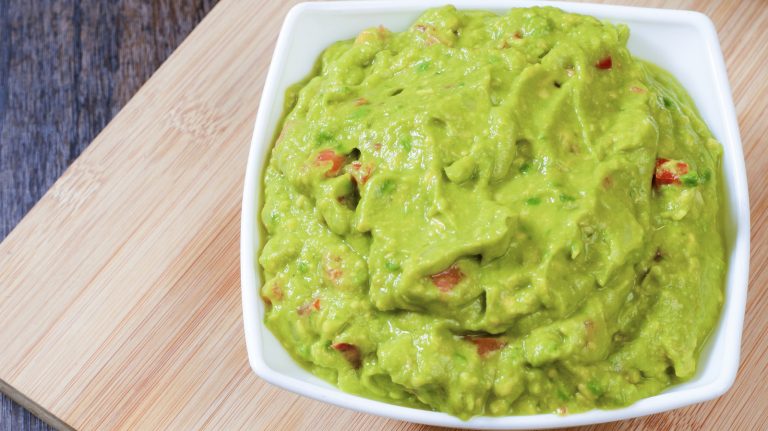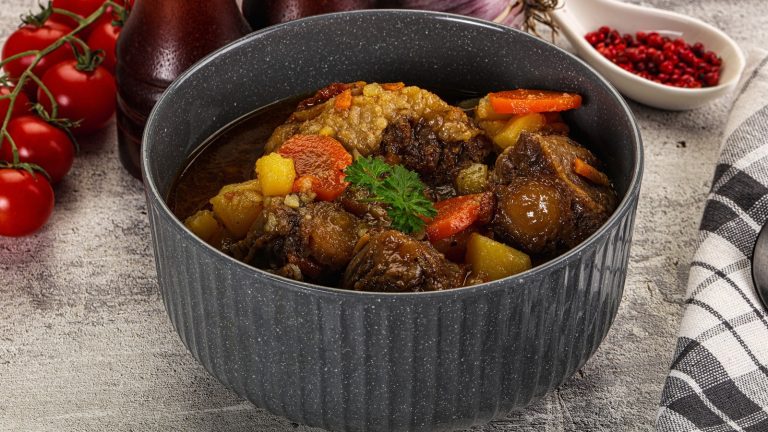The bloody mary is an unconventional albeit extremely well-known cocktail in the United States. The drink has gained the reputation of being something of a classic breakfast cocktail – a “hair of the dog” kind of drink to satiate and reawaken you. But north of the border in Canada, the drink has taken on a whole life of its own, moving past being strictly a “breakfast drink” (although it’s still enjoyed as such) and even moving past tomato juice. Enter the bloody Caesar.
Made with clamato juice, this swap might not be lost on you if you’re familiar with beer cocktails such as the classic clamato michelada. But for the uninitiated, you can think of this juice essentially as tomato juice mixed with clam juice. We know — that’s not a very convincing sales pitch for the beverage, but the briny taste of the clam flavor adds a layer of complexity to the cocktail not achieved with regular tomato juice. It also helps that the typical store-bought clamato juice tends to be thinner than tomato juice, making your bloody Caesar less viscous and soup-like compared to a bloody mary.
It seems, though, that the bloody Caesar has remained one of Canada’s cultural icons, not really gaining a foothold outside of the Great White North — but that doesn’t stop Canadians from enjoying millions of bloody Caesars per year. It seems that the change from tomato to clamato juice was a wise one then, as the bloody Caesar has become a certified must-try Canadian creation.
From a bartender’s brainchild to national sensation
In the same way that poutine has become synonymous with Canadian dining, so too has the bloody Caesar become synonymous with Canadian drinking — but of course, it was not always this way. Both the bloody mary and the bloody Caesar are fairly recent creations as far as history goes, with the bloody Caesar only cropping up in the 1960s — and it came from relatively humble beginnings considering the national recognition of the cocktail today.
The story goes that once upon a time, Calgary, Alberta-based bartender Walter Chell conceived the bloody Caesar by riffing on its forebear, the bloody mary. Supposedly, the addition of clam juice to the tomato juice was done in homage to his favorite Italian dish, spaghetti alle vongole. However, it didn’t take long for patrons in the Calgary area to latch onto this creation. And before you knew it, word of the bloody Caesar had spread from coast to coast. These days, you might even see some Canadians celebrating “Caesar Day,” an unofficial celebration held on the Thursday before Canada’s Victoria Day long weekend in May (sometimes, but not always, concurrent with Memorial Day in the United States). It’s safe to say, then, that the bloody Caesar really has a hold on the drinking culture north of the border, even gaining parliamentary approval as the national drink of Canada.
What goes into a bloody Caesar?
Since the bloody Caesar became its own bonafide cocktail, quite a few other changes have taken hold. Considering how geographically expansive Canada is, it shouldn’t be a surprise that there isn’t one agreed-upon recipe that acts as the gospel for all Caesar lovers in the country. How you enjoy your bloody Caesar is likely different from how the person beside you likes theirs. And this differentiation is definitely reflected in the various recipes and ingredient lists you may encounter.
The “official” bloody Caesar, as outlined by Mott’s itself, calls for vodka, clamato juice, Worcestershire sauce, hot sauce, and salt and pepper. Chell reportedly didn’t use hot sauce in his original Caesar, though now it’s a widely accepted ingredient. You may well see citrus juice used within the drink instead of as a garnish only, though the jury is split on whether you should use lemon or lime. You’ll also see the likes of horseradish, fish sauce, and oregano featured in different bloody Caesar recipes.
Even the choice of how to rim your glass changes, with some advocating for the traditional celery salt and others using various spice blends made exclusively as bloody Caesar rimmers. And that’s not even mentioning garnishes, where you could see anything from the usual celery stalk to lobster tails, chicken wings, and even whole burgers. In short, there are many ways to drink and celebrate Canada’s national drink, whether it uses alcohol or not, so there’s no reason not to get in on the fun yourself!







